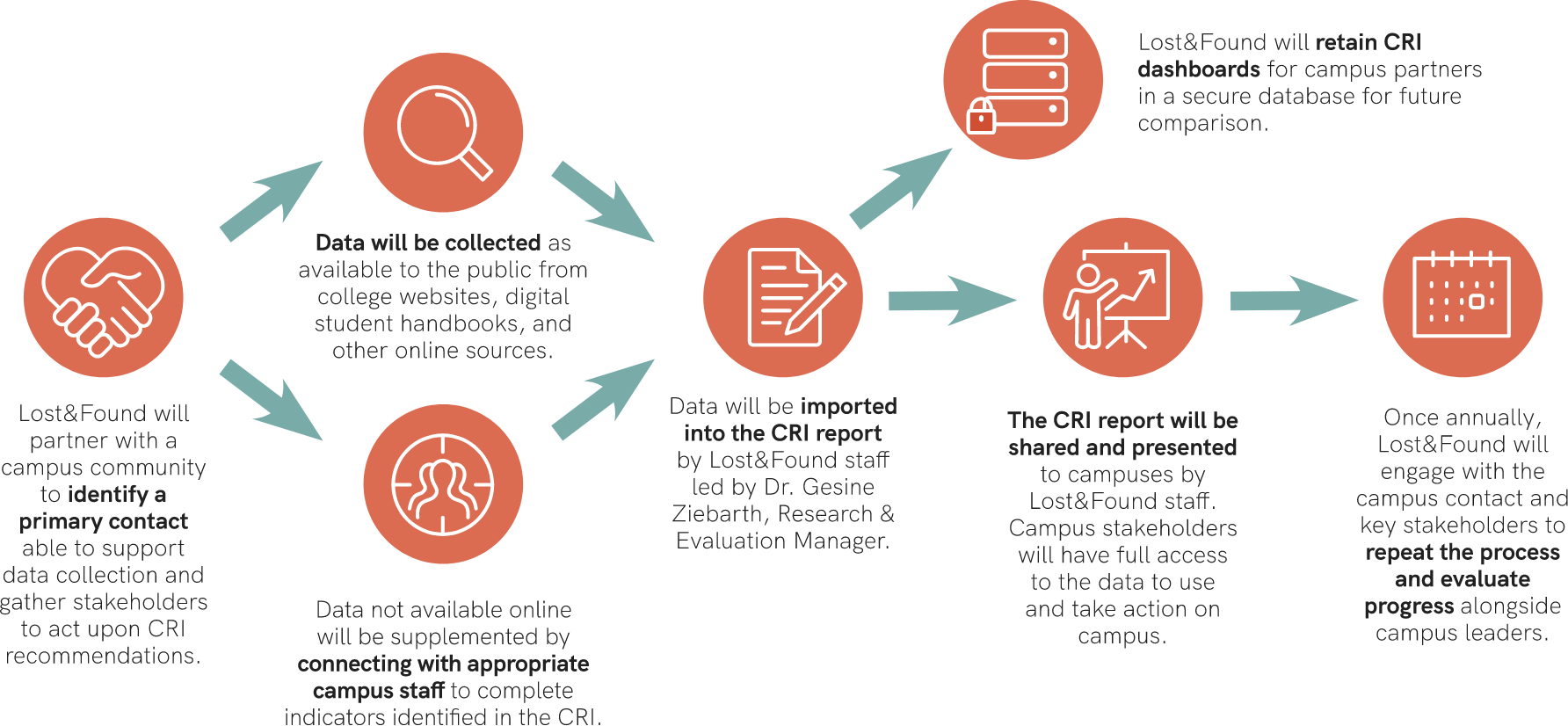Campus Resilience Index helps campuses create a suicide prevention culture
As part of its partnerships with post-secondary campuses in the Midwest, Lost&Found is using an evaluation tool called the Campus Resilience Index (CRI) to provide guidance on how to best create a culture of suicide prevention.
The tool was piloted at Lake Area Technical College in Watertown, S.D., in the fall of 2021.
“This is exactly what I wanted – what I needed,” LATC counselor Jessi Whetsel said after the process was completed. It helped to confirm what she had observed about the campus culture at Lake Area Tech and provided a better idea of how to fulfil student needs.
Lost&Found’s Research & Evaluation Manager Gesine Ziebarth, who helped to design and implement the CRI, said the pilot project at Lake Area “opened up the discussion for where we can go from here as an organization and how a tool like the CRI support students.”
The CRI is based on the Center for Disease Control and Prevention (CDC)’s technical package on suicide prevention (Preventing Suicide: A Technical Package of Policy, Programs, and Practices (cdc.gov)). Lost&Found staff defined indicators of risk factors and protective factors of suicide on college campuses that aligned with the CDC’s seven strategies of suicide prevention. Lost&Found looks at the overall campus mental health ecosystem — including policies and procedures, reporting structures, accessibility of information, resources listed on websites, syllabi, student clubs and organizations, and more — to identify strengths and gaps in suicide prevention practices.
This assessment provides campus administrators with information that helps them create an environment conducive to wellness on campus.
The CRI process
Evaluating a campus using the CRI begins with gathering data. Education & Advocacy Manager Courtney Young gathers preliminary data using the school website and conducts interviews with staff to determine structures of support currently in place on campus. Research & Evaluation Manager Gesine Ziebarth determines how the data aligns with each of the indicators defined in the index.
Once measurements of resilience are determined, they are sent to a campus partner with a request for feedback. After that feedback is incorporated, Lost&Found present the CRI and the recommendations they have identified to campus staff, including campus counselors and administrators.
The CRI is intended to be implemented annually so administrators can see how the campus culture changes over time, either through their efforts to improve it, from outside factors, or both.
The data is not public, but campus administrators can release the data if they choose. After a base number of CRI assessments are completed, averages will also be provided to campus administrators so they can see how their campus culture compares to others in the region.
What’s next
Since the successful pilot program at Lake Area Tech, Lost&Found has started the process of implementing the CRI at Dakota Wesleyan University and will present recommendations for improvement in July. The goal at Dakota Wesleyan is to increase retention and a sense of belonging on campus primarily using two of the seven strategies outlined in the CDC’s technical package — identifying and supporting people at risk and promoting connectedness — as these have been identified as areas of growth at DWU.
Lost&Found has also started the CRI data collection process at the University of South Dakota and hopes to use the Campus Resilience Index at South Dakota State University, Augustana University, and Western Dakota Technical College in the near future.

